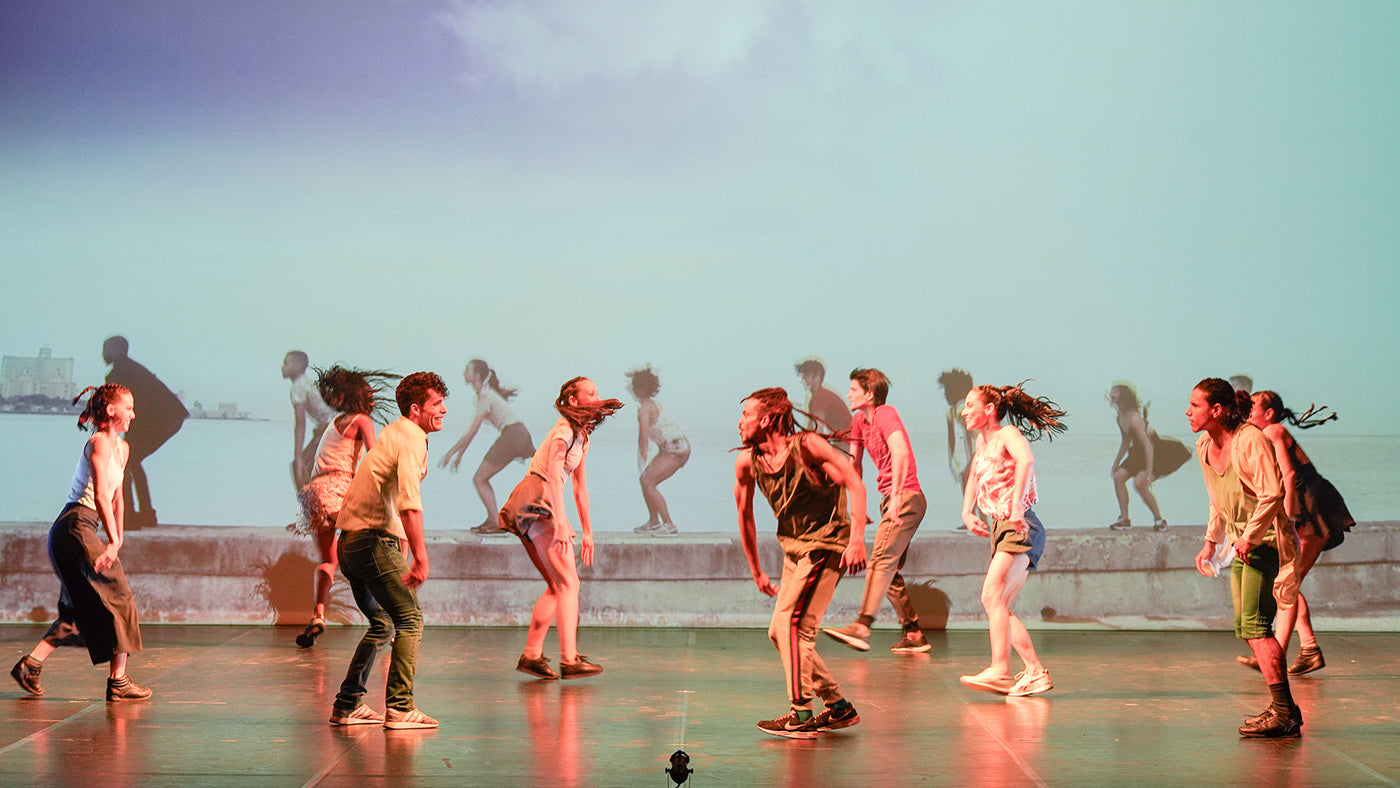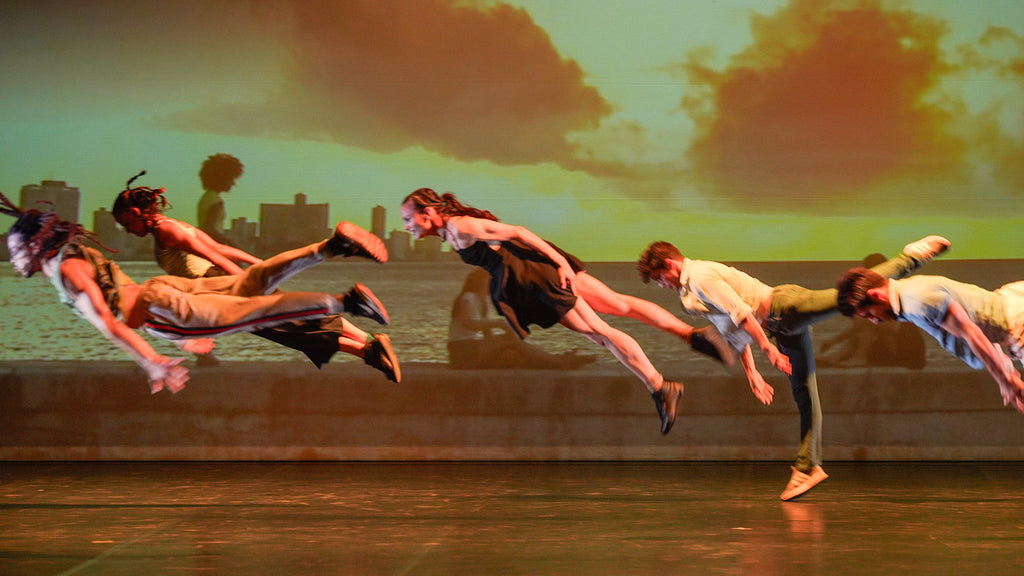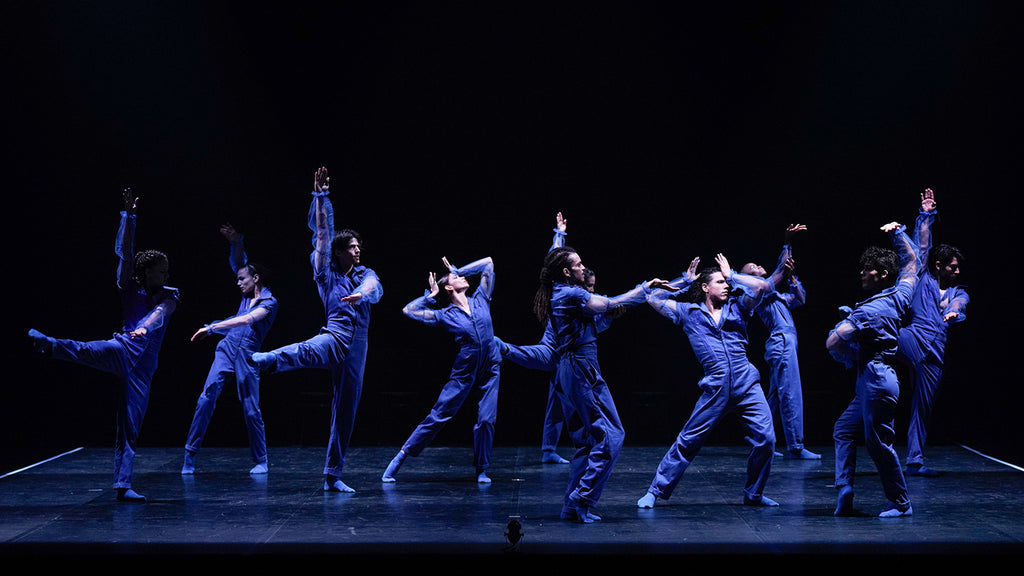While “98 Días” is not the joyful piece one may have expected from its description, more playful duets, and a few smiles, emerge towards the end. Also, while the meaning may be lost on non-Spanish speakers, “Cuba” and “Santiago,” which are repeated throughout Lorca’s poem, are spoken with a deep, heartwarming affection. It suggests that, despite the challenges, it’s worth fighting for the right to remain in the places that feel like home.
Alexis Fernández’s “De Punta a Cabo,” the final work of the evening, is a celebration of the multiplicity of Cuban culture. A film of the Malecón, the famous eight kilometer-long promenade on the coast of Havana, is projected on the back wall. The dancers, dressed as “normal people,” enter the stage to create a vibrant street scene, communicating with each other through various styles of movement. There’s en pointe duets and balletic lifts, flirtatious fanning, shouting, and shared seductive smiles, as well as a dance battle with latin, afro, and hip-hop influences. It’s all in good humor until a more aggressive fight breaks out!
The projected film holds this melange together and gives it structure—starting bright and sunny and before progressively darkening, it takes the dancers from day to night to early morning, from raucous group sequences to sleepy swaying duets. The dancers themselves also appear on the film, acting as digital doppelgangers for their onstage counterparts to interact with.
The description of “De Punta a Cabo” claims that, in 17 minutes, it “captures all the contradictions of his country, divided between tradition and modernity, poverty and development.” It’s a big claim, and maybe not entirely fulfilled. However, the work’s vibrancy, and the dancer’s ebullient performances, are the perfect ending to “Ajiaco.” It’s the long-awaited spicy ingredient for this self proclaimed “soupy” programme.












comments